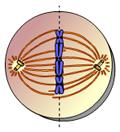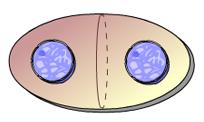Which of these is NOT a carcinogen?Which of these is NOT a carcinogen?
A. Cigarette smoke
B. Testosterone
C. UV light
D. Fat
E. All of the above are carcinogens
E. All of the above are carcinogens
_____ is a carcinogen that promotes colon cancer._____ is a carcinogen that promotes colon cancer.
A. Fat
B. UV light
C. Estrogen
D. A virus
E. Testosterone
A. Fat

Which of these acts as a second messenger?
A. B
B. A
C. C
D. D
E. E
D. D

Which of these is responsible for initiating a signal transduction pathway?
A. A
B. B
C. C
D. D
E. E
A. A
What role does a transcription factor play in a signal transduction pathway?
A. By binding to a plasma membrane receptor it initiates a cascade.
B. It relays a signal from the cytoplasm to the plasma membrane.
C. It activates relay proteins.
D. By binding to DNA it triggers the transcription of a specific gene.
E. It is a plasma membrane protein that binds signal molecules.
D. By binding to DNA it triggers the transcription of a specific gene.
Which of these is a membrane receptor?
A. A
B. B
C. C
D. D
E. E
B. B
A signal transduction pathway is initiated when a _____ binds to a receptor.
A. G protein
B. Tyrosine kinase
C. Calmodulin
D. Signal molecule
E. Cyclic AMP
D. Signal molecule
Which of these acts as a second messenger?
A. G-protein-linked receptor
B. Cyclic AMP
C. G protein
D. Protein kinase
E. Adenylyl kinase
B. Cyclic AMP
Calcium ions that act as second messengers are stored in _____.
A. Endoplasmic reticula
B. Peroxisomes
C. Lysosomes
D. Chloroplasts
E. Mitochondria
A. Endoplasmic reticula
_____ catalyzes the production of _____, which then opens an ion channel that releases _____ into the cell's cytoplasm.
A. Phospholipase C ... IP3 .... Ca2+
B. Adenylyl cyclase ... IP3 .... Ca2+
C. Protein kinase ... PIP2 ... Na+
D. Adenylyl cyclase ... cyclic AMP ... Ca2+
E. Phospholipase C ... cyclic AMP ... Ca2+
A. Phospholipase C ... IP3 .... Ca2+
A protein kinase activating many other protein kinases is an example of _____.
A. Sensitization
B. Deactivation
C. Amplification
D. A cellular response
E. Mutualism
A. Amplification
The cleavage of glycogen by glycogen phosphorylase releases _____.
A. Cellulose
B. Fructose-1-phosphate
C. Glucose-1-phosphate
D. Galactose-1-phosphate
E. Nothing: glycogen phosphorylase cannot cleave glycogen
C. Glucose-1-phosphate
Epinephrine acts as a signal molecule that attaches to _____ proteins.
A. Nuclear receptor
B. Ion-channel receptor
C. Intracellular receptor
D. G-protein-linked receptor
E. Receptor tyrosine kinase
D. G-protein-linked receptor
Which of these is a receptor for calcium ions?
A. G protein
B. PIP2
C. Adenylyl cyclase
D. Calmodulin
E. IP3
D. Calmodulin
Which of these is NOT correct?
A. Ion channels are found on both the plasma membrane and the endoplasmic reticulum.
B. Tyrosine-kinase receptors consist of two polypeptides that join when activated by a signal molecule.
C. Kinases are enzymes that phosphorylate other molecules.
D. Phospholipase C catalyzes the formation of IP3.
E. Cyclic AMP binds to calmodulin.
E. Cyclic AMP binds to calmodulin.
A toxin that inhibits the production of GTP would interfere with the function of a signal transduction pathway that is initiated by the binding of a signal molecule to _____ receptors.
A. G-protein-linked
B. Steroid
C. Intracellular
D. Ion-channel
E. Receptor tyrosine kinase
A. G-protein-linked
Which of these is a logical signal transduction pathway?
A. An intracellular receptor activates phospholipase C, which cleaves a membrane protein to form IP3, which then activates the opening of an ER channel protein, which releases cyclic AMP into the cytoplasm, where it binds to an intracellular enzyme that carries out a response.
B. A receptor tyrosine kinase activates adenylyl cyclase, which activates phospholipase C, which converts ATP into cyclic AMP, which binds to an intracellular enzyme that carries out a response.
C. A G-protein-linked receptor activates G protein, which activates phospholipase C, which cleaves a membrane lipid to form IP3, which binds to a calcium channel on the ER, which opens to release calcium ions into the cytoplasm, which bind to an intracellular enzyme that carries out a response.
D. An ion-channel receptor opens, allowing a steroid hormone to enter the cell; the steroid hormone then activates protein kinases that convert GTP to GDP, which binds to an intracellular enzyme that carries out a response.
C. A G-protein-linked receptor activates G protein, which activates phospholipase C, which cleaves a membrane lipid to form IP3, which binds to a calcium channel on the ER, which opens to release calcium ions into the cytoplasm, which bind to an intracellular enzyme that carries out a response.
An environmental substance that is known to cause cancer is called a what?
A. Teratogen
B. Carcinogen
C. Mutagen
D. Mitogen
B. Carcinogen
Radiation emitted from which of the following two sources are most alike?
A. X-rays and microwaves
B. Microwaves and cellphones
C. Cellphones and cosmic rays
D. Cosmic rays and light bulbs
B. Microwaves and cellphones
You are trying to discover if the pesticide atrazine is a mutagen. Where are you looking for mutations?
A. DNA
B. RNA
C. Mitochondria
D. Glucose molecules
A. DNA
Which of the following is true?
A. A cancer-causing substance always directly damages DNA.
B. No substance has ever been determined to cause cancer.
C. A cancer-causing substance never directly damages DNA.
D. Cancer-causing substances work in many different ways.
D. Cancer-causing substances work in many different ways.
Which of the following best summarizes current scientific opinion regarding cellphones and brain cancer?
A. While most studies indicate that cellphones cause brain cancer, the studies are not statistically sound.
B. While most studies indicate that cellphones do not cause brain cancer, more research needs to be done as cellphone use increases.
C. Cellphones do not cause brain cancer.
D. Cellphones cause brain cancer.
A. While most studies indicate that cellphones do not cause brain cancer, more research needs to be done as cellphone use increases.
Nucleoli are present during _____.
A. Prometaphase
B. Metaphase
C. Interphase
D. Prophase
E. Anaphase
C. Interphase
Cytokinesis often, but not always, accompanies _____.
A. Interphase
B. Telophase
C. Prometaphase
D. Anaphase
E. Metaphase
B. Telophase
Chromosomes become visible during _____.
A. Interphase
B. Prometaphase
C. Prophase
D. Anaphase
E. Metaphase
C. Prophase
Centromeres divide and sister chromatids become full-fledged chromosomes during _____.
A. Telophase
B. Anaphase
C. Interphase
D. Metaphase
E. Prometaphase
B. Anaphase
Spindle fibers attach to kinetochores during _____.
A. Interphase
B. Anaphase
C. Telophase
D. Metaphase
E. Prometaphase
E. Prometaphase

This animation illustrates the events of _____.
A. Metaphase
B. Telophase
C. Interphase
D. Anaphase
E. Prophase
D. Anaphase

This animation illustrates the events of _____.
A. Cytokinesis as it occurs in plant cells
B. Cytokinesis as it occurs in animal cells
C. Metaphase
D. Prometaphase
E. Prophase
B. Cytokinesis as it occurs in animal cells

This animation illustrates the events of _____.
A. Telophase
B. Anaphase
C. Prometaphase
D. Interphase
E. Prophase
E. Prophase

This animation illustrates the events of _____.
A. Metaphase
B. Anaphase
C. Prometaphase
D. Telophase
E. Prophase
A. Metaphase

This animation illustrates the events of _____.
A. Interphase
B. Anaphase
C. Cytokinesis as it occurs in plant cells
D. Prometaphase
E. Metaphase
D. Prometaphase

This animation illustrates the events of _____.
A. Anaphase
B. Prometaphase
C. Prophase
D. Metaphase
E. Cytokinesis as it occurs in plant cells
E. Cytokinesis as it occurs in plant cells

This animation illustrates the events of _____.
A. Prophase
B. Anaphase
C. Telophase
D. Prometaphase
E. Metaphase
C. Telophase
During prophase a homologous pair of chromosomes consists of _____.
A. One chromosome and four chromatids
B. Four chromosomes and two chromatids
C. One chromosome and two chromatids
D. Two chromosomes and two chromatids
E. Two chromosomes and four chromatids
E. Two chromosomes and four chromatids

Which of these is a receptor molecule?
A. D
B. A
C. B
D. E
E. C
C. B
A signal transduction pathway is initiated when a _____ binds to a receptor.
A. Tyrosine kinase
B. G protein
C. Signal molecule
D. Cyclic AMP
E. Calmodulin
C. Signal molecule

Which of these is a signal molecule?
A. A
B. B
C. D
D. C
E. E
A. A
A signal molecule is also known as a(n) _____.
A. Initiator
B. Key
C. Ligand
D. Receptor
E. Protein
C. Ligand
Which of these is the second of the three stages of cell signaling?
A. Gene activation
B. Reception
C. Binding of a neurotransmitter to a plasma membrane receptor
D. Transduction
E. Cell response
D. Transduction

Which of these phases encompasses all of the stages of mitosis?
A. C
B. E
C. D
D. B
E. A
B. E
During _____ both the contents of the nucleus and the cytoplasm are divided.
A. The mitotic phase
B. Mitosis
C. G1
D. S
E. G2
A. The mitotic phase
During _____ the cell grows and replicates both its organelles and its chromosomes.
A. Mitosis
B. Cytokinesis
C. Interphase
D. S
E. G1
C. Interphase